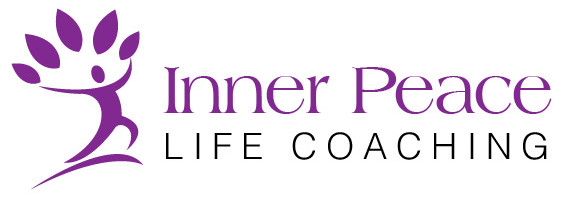Understanding Holistic Well-Being
Understanding Holistic Well-Being: A Comprehensive Approach to Health and Happiness
In today’s fast-paced world, the concept of well-being is often reduced to mere physical health, with a focus on diet, exercise, and avoiding illness. However, true well-being extends far beyond the physical. It encompasses a holistic approach that includes mental, emotional, spiritual, and social aspects of life. Understanding holistic well-being means recognizing the interconnection between these various elements and striving for balance in all areas of life.
What is Holistic Well-Being?
Holistic well-being is a comprehensive approach to health that considers the whole person—mind, body, spirit, and emotions—in the pursuit of optimal health and happiness. Unlike traditional approaches that might focus on treating specific symptoms or conditions, holistic well-being emphasizes the importance of balance and harmony in all aspects of life. It’s about nurturing your physical body, cultivating a positive mindset, maintaining emotional stability, and fostering meaningful connections with others.
The Pillars of Holistic Well-Being
To truly understand and achieve holistic well-being, it’s important to explore the key pillars that make up this approach:
- Physical Well-Being
Physical well-being is often the most visible and discussed aspect of health. It involves taking care of your body through regular exercise, a balanced diet, adequate sleep, and proper medical care. Physical health is the foundation upon which other aspects of well-being are built. When your body is strong and healthy, you’re better equipped to handle stress, stay productive, and engage in the activities you love.
However, physical well-being isn’t just about avoiding illness; it’s about thriving. This means engaging in physical activities that you enjoy, nourishing your body with wholesome foods, staying hydrated, and allowing yourself the rest and recovery needed to function at your best.
- Mental and Emotional Well-Being
Mental and emotional well-being is just as crucial as physical health. This aspect involves nurturing a positive mindset, managing stress, and maintaining emotional balance. Mental well-being includes your thoughts, attitudes, and perceptions, which significantly influence your overall happiness and life satisfaction.
Emotional well-being, on the other hand, refers to your ability to understand, express, and manage your emotions. It’s about being aware of your feelings, developing resilience, and coping with life’s challenges in a healthy way. Techniques such as mindfulness, meditation, and cognitive-behavioral strategies can be incredibly effective in enhancing mental and emotional well-being.
- Spiritual Well-Being
Spiritual well-being is often misunderstood or overlooked in discussions of health, but it plays a vital role in holistic well-being. Spiritual well-being is about finding meaning and purpose in life, feeling connected to something greater than oneself, and aligning with your core values.
Whether it’s through meditation, prayer, spending time in nature, or practicing gratitude, spiritual well-being involves exploring your inner self and fostering a sense of peace and fulfillment. This aspect of well-being helps you navigate life’s ups and downs with a sense of grounded-ness and clarity.
- Social Well-Being
Humans are inherently social beings, and our relationships with others play a crucial role in our overall well-being. Social well-being involves building and maintaining healthy relationships, having a support network, and engaging in meaningful social interactions.
Positive social connections contribute to emotional support, a sense of belonging, and increased life satisfaction. Conversely, social isolation can lead to feelings of loneliness and even impact physical health. Therefore, nurturing your relationships with family, friends, and your community is essential for holistic well-being.
The Interconnectedness of Well-Being
One of the key principles of holistic well-being is the interconnectedness of its various components. Each aspect of well-being influences and is influenced by the others. For example, chronic stress (mental well-being) can lead to physical health problems like high blood pressure (physical well-being), which in turn can affect your mood and relationships (emotional and social well-being).
Similarly, neglecting spiritual well-being can result in feelings of emptiness or lack of purpose, which can impact your mental health and overall life satisfaction. This interconnectedness underscores the importance of a balanced approach to well-being, where all aspects are nurtured and cared for.
Practical Steps to Achieve Holistic Well-Being
Achieving holistic well-being requires a conscious effort to balance and integrate the various aspects of your life. Here are some practical steps to get started:
- 💄 Prioritize Self-Care: Make time for activities that nourish your body, mind, and spirit. This could include regular exercise, healthy eating, meditation, or pursuing hobbies that bring you joy.
- 🧘♀️ Practice Mindfulness: Stay present in the moment and cultivate awareness of your thoughts, feelings, and surroundings. Mindfulness can help reduce stress and enhance your emotional well-being.
- 🤝 Build Strong Relationships: Invest in your relationships by spending quality time with loved ones, listening actively, and offering support when needed. A strong social network is key to emotional and social well-being.
- ⚖ Seek Balance: Strive for a balance between work and play, activity and rest, and social time and solitude. Balance is crucial for maintaining all aspects of well-being.
- ✨ Reflect on Your Purpose: Take time to explore what gives your life meaning and purpose. Engage in activities that align with your values and contribute to your sense of fulfillment.
Conclusion
Holistic well-being is about more than just avoiding illness; it’s about thriving in every aspect of your life. By understanding and nurturing the physical, mental, emotional, spiritual, and social components of well-being, you can achieve a state of health and happiness that is balanced and sustainable. Remember, the journey to holistic well-being is ongoing, but with mindful effort, it’s within everyone’s reach.
References
– World Health Organization. (1948). Preamble to the Constitution of the World Health Organization. New York: WHO.
– Myers, J. E., Sweeney, T. J., & Witmer, J. M. (2000). The Wheel of Wellness Counseling for Wellness: A Holistic Model for Treatment Planning. Journal of Counseling & Development, 78(3), 251-266.
– Seligman, M. E. P. (2011). Flourish: A Visionary New Understanding of Happiness and Well-being. New York: Free Press.
– Goleman, D. (1995). Emotional Intelligence: Why It Can Matter More Than IQ. New York: Bantam Books.
– Siegel, D. J. (2010). The Mindful Therapist: A Clinician’s Guide to Mindsight and Neural Integration. New York: W. W. Norton & Company.
Sajid Ahamed is a “Certified Trainer of NLP” and organizes John Grinder approved New Code NLP and NLP Master Practitioner Certifications Courses in India and the Middle East. He has more than 1000 hours of coaching experience and is an ICF accredited Professional Certified Coach (PCC). Apart from the Trainings, he covers a wide niche of coaching including Relationship Coaching, Parenting Coaching, Leadership Coaching.
To be updated with latest trends in Coaching and psychotherapy, join our Facebook Private Group.
For Further networking, follow us on Facebook | Instagram | Youtube













